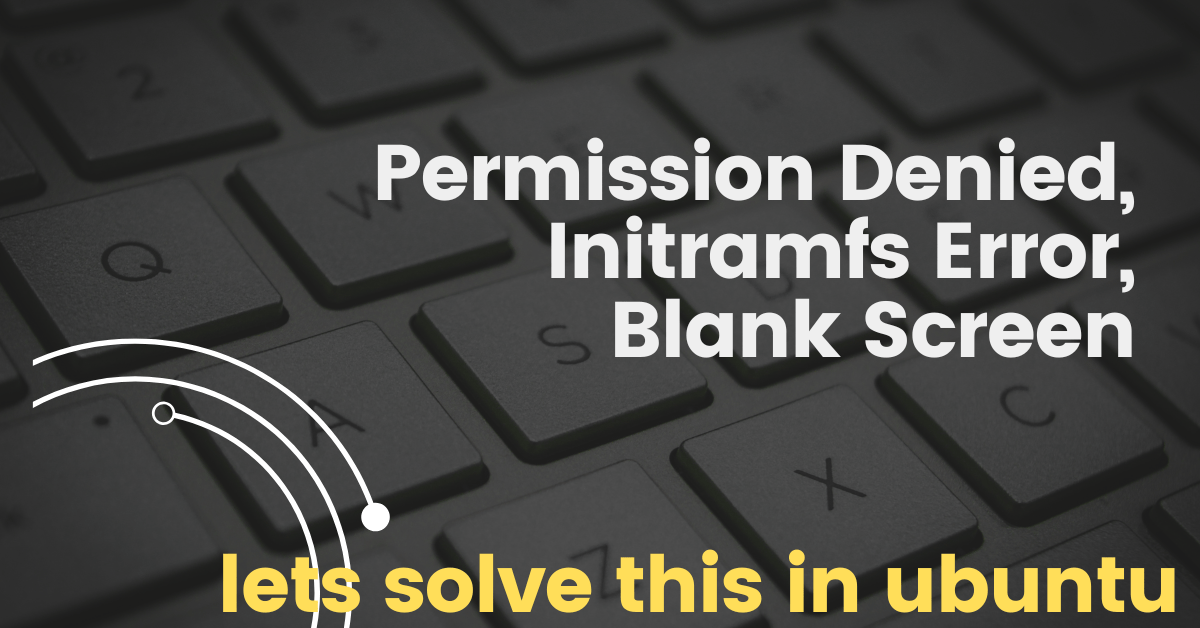Error: “Permission Denied”
- Description: Have you ever tried opening a file or folder in Ubuntu and got slapped with a “Permission Denied” message? It’s like the digital version of a locked door. This happens when your computer says, “Hey, you can’t touch that!” because you don’t have the right permission to do so.
- Solution: Don’t worry, there’s a key to unlock this. Here’s how:
- Check Permissions: Use the
ls -lcommand to see what permissions you currently have. It’s like checking if you have a green light to enter. - Change Permissions: If you need more access, use the
chmodcommand. For example, if you can’t run a script, typechmod +x filenameto tell your computer it’s okay to run it. - Supercharge with sudo: If you’re dealing with files that are super stubborn, you can bring in the heavy lifter
sudo. It’s like calling in the boss to get things done. - Be Careful: But, hold your horses! Using
sudois like using a superpower. Only use it when you really need it, or you might mess things up.
This error pops up when you’re trying to mess with important files or folders without the right permission. By understanding this permission stuff and using sudo it when you have to, you’ll show Ubuntu who’s boss!
Error: “Initramfs Error”
- Description: Imagine a stage play about to begin, but the curtains get stuck. That’s what happens with an “Initramfs Error.” It’s like the opening act, where your computer sets up, hits a snag. This happens when the starting setup, called initramfs, faces problems during boot-up.
- Solution: Let’s fix this stage glitch:
- Boot Repair: Use Boot Repair from a USB stick to automatically fix common initramfs issues.
- Check Disk Space: Make sure you’ve got enough digital room. Low space can lead to this error.
- Check Filesystem: Run a file check (fsck) to fix any errors in the system. You can do this from a USB too.
- Reinstall Kernel: If the issue sticks around, reinstall the kernel using
sudo apt install --reinstall linux-image-$(uname -r).
This error occurs when your computer cannot initiate the process properly. You can resolve it by utilizing Boot Repair, ensuring sufficient space, and performing a file check. These steps will pave the way for a seamless performance in Ubuntu.
Error: “Blank Screen After Login”
- Description: Imagine unlocking your front door, but when you step inside, everything is pitch black. The “Blank Screen After Login” error is just like that—it’s when you log in to Ubuntu, but the screen stays black without anything visible.
- Solution: Let’s brighten up your screen:
- Restart: Sometimes, a quick restart can fix this. Give it a shot.
- Brightness Check: Make sure your screen isn’t too dark. Adjust the brightness settings.
- Update Graphics Drivers: Outdated graphics drivers can cause this issue. Get newer ones or reinstall the current ones.
- Recovery Mode: Use recovery mode to fix or reset your display settings.
- Check Startup Apps: Some apps starting automatically can mess things up. Turn off the ones you don’t need.
- Update Everything: Keep your system and apps up to date.
- Close screen: close your screen after a minute and re-open it.
This problem happens when your screen stays black after logging in. By following these steps to handle graphics drivers, display settings, and apps, you’ll light up your screen and get back to using Ubuntu smoothly.



